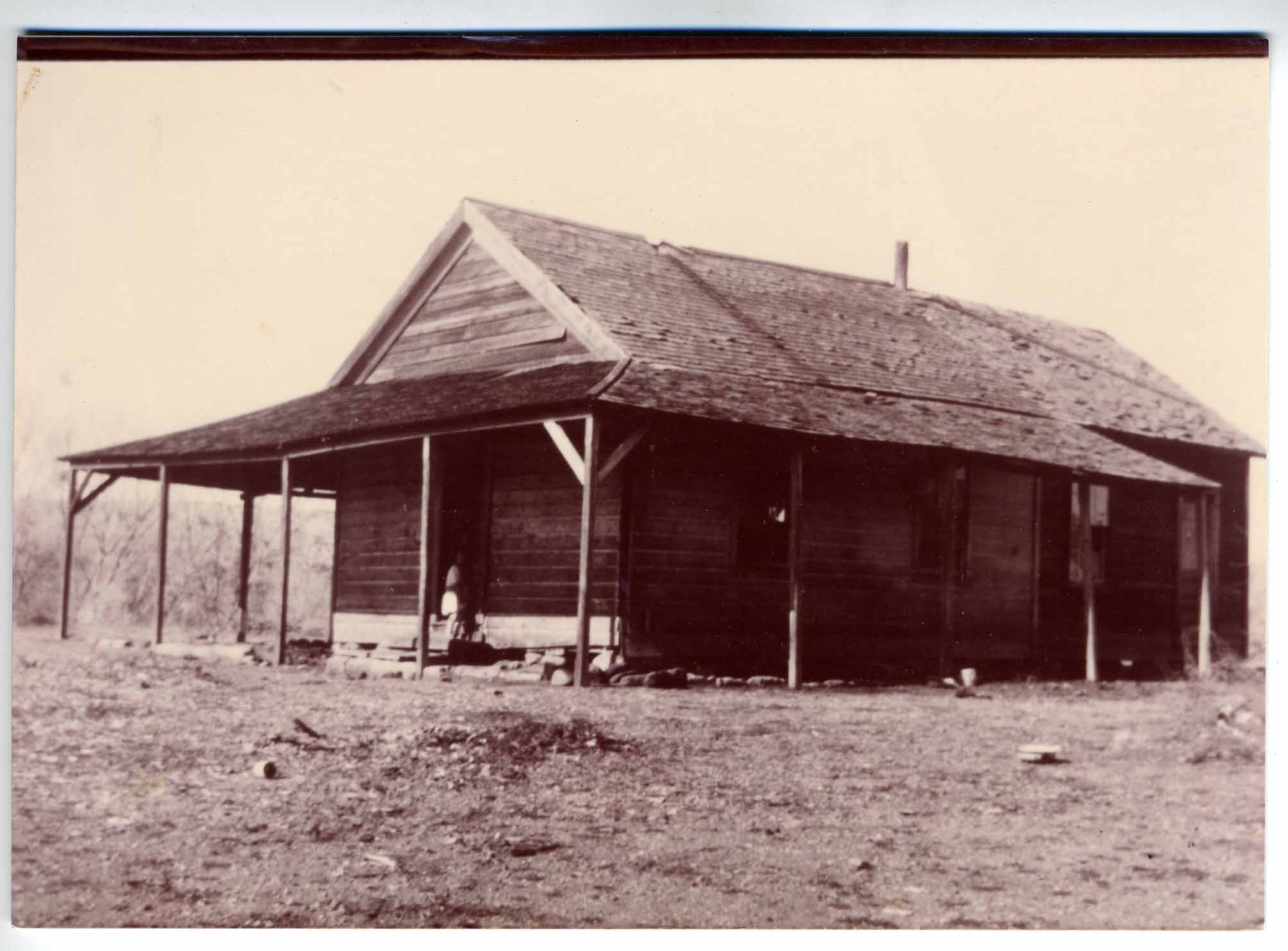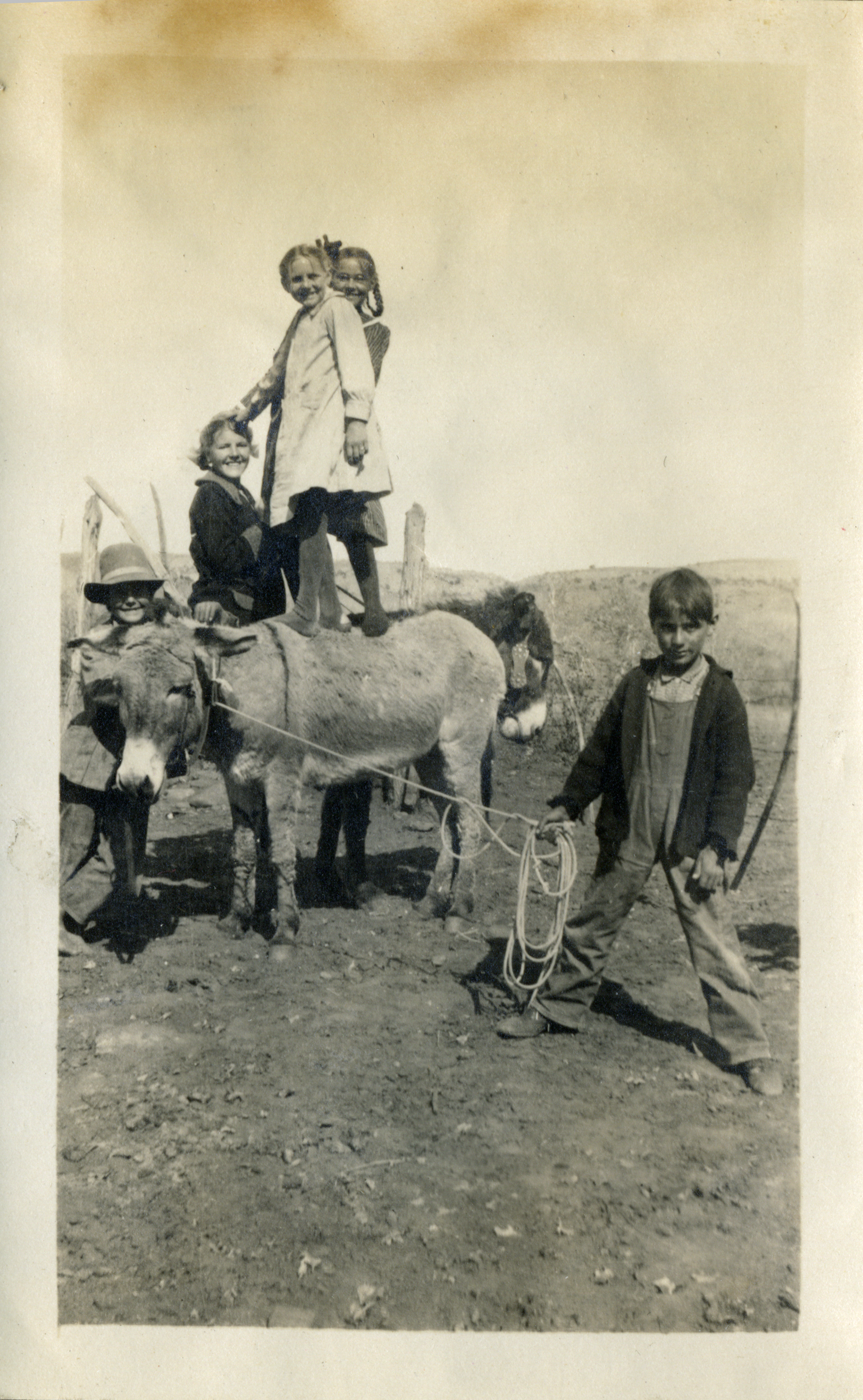Writing from a log by Oak Creek…
Sept. 9, 1913
My very dear Family:
I must tell you about Jerome. It was Saturday and late afternoon as we approached Jerome. A sort of stage met the halted train and took us passengers into the town, we each paid fifty cents. I certainly wouldn’t walk. The short drive is on a narrow, steep, winding mountain road.
I never imagined such a town. It looks like New York slums turned loose on a hillside and like Spain and Italy and almost like Chinatown combined. The mountainside is bare and bleak and the houses are queer and black and mysterious looking. The dirty saloons are surrounded by groups of foreigners who stare.
When we turned into the town little children of all kinds followed us waving and dancing. Such hordes of children and babies I never saw before. I saw three small boys holding babies, one holding a very wee one. Almost all are Mexican or Italian. I gave some of the left over cake in oiled paper to two dark skinned stringy-haired youngsters who were more than pleased. I want to have a big bag of candy next time, each piece in paper, you know the kind, and throw out handfuls of it!
A leaflet on the train had advertized a certain hotel, so we said we’d go there for overnight. We’d been told that the next day a stage would be going down to Cornville. Jerome is a frontier mining town and Saturday night of course meant celebration. It looked wild. The bus driver stopped at a corner where there was a saloon, with a drunk man leaning against a post in front of it. A dark narrow staircase outside led up to evident rooms above. The driver pointed “That’s the hotel up there,” he said. I felt terrified and Marguerite was trembling so hard her jaw was shaking. The driver no doubt noticed our feeling for he said, “You don’t have to stay there. I know a woman who takes in girls, I’ll drive you there.” That certainly didn’t make us feel much better. I thought “white slavery” with horror.
Apparently Marguerite thought the same. She was very pale and could hardly speak as she said “We’ll look at the place.” I managed “We’ll look at the woman.” When we discovered that a local school teacher lived there we really were relieved. The landlady was honest and kind and friendly.
The next day we were driven down from the mountainside by the narrow country road to the beautiful Verde valley, to where (near Cornville) lower Oak Creek joins the Verde River.
Oak Creek is about three minutes from where we live. We crossed the creek three times on the two-mile drive from the post office at Cornville. We crossed the Verde, (into which this empties), I believe, on the fifteen mile stage trip from Jerome to the Cornville office. Then the rough water was above the horses knees. The stage driver said that our creek, Oak Creek, is the prettiest one in Arizona, and I don’t doubt it.
On the train we passed so many barren places and schoolhouses (the worst, I think, were near Cajon Pass before we were out of California), that I was prepared for a bleak outlook, and unspeakably thankful for all this beauty about us. Also, Montezuma’s Well and Montezuma’s Castle are only ten, eight, twelve miles or so away. We kept school only half a day yesterday, but stayed ourselves until about six, and I worked much in the evening. It was the arranging of the work and study of school laws and prescribed courses of study that swamped us at first. Today school lasted the regular length of time, nine o’clock to four o’clock, with two twenty minute recesses and an hour at noon. It takes about two minutes to walk up the hill from our house to the schoolhouse. We have to stay at noon to be with the children, but Mrs. Girdner sends us delicious luncheons, daintily prepared.
I was prepared for things so much worse than we found them that I can take such conditions as a lark, but poor Marguerite finds country life almost too much at first! She’s always lived in town, for example, and apparently never washed a thing in her life. This she has done some tonight, and she dreads taking off her silk stockings but supposes she’ll have to eventually wear some other sort to school in order to be sensible! She’s never taken a bath from a basin and doesn’t know how she can! I think she’ll get used to country life. I find things wonderfully near my ideal for this year. I shouldn’t want to live here always, out of the world.
As Marguerite has the ninth grade, I have the first five instead of just four grades, as these people evidently expected all the time. I have only nine children so far in all the five grades. Ever so many more are coming next week, we hear, and others still later when they aren’t needed for home work. Cattlemen who have their families with them in the mountains come here for the winter for school and to avoid the deep snow, etc. Evidently we’ll have a more or less shifting registration.
Some of my children are dear and must be of good families. Others are “common” and need baths ! But I think I’ll love them all. Here comes a good, cool breeze. The air in here is grand, the most bracing I’ve ever known. I think it is going to agree with me splendidly. Mrs. Girdner is a fine cook and has sensible things to eat. I heard her say we are to have chicken and peach cobbler tonight! They have plenty of vegetables, but so far have had nothing in the way of meat but chicken and bacon. Beef seems scarce here, though there are plenty of cattle, delicious peaches and melons, and plenty of vegetables. I had milk and had a raw egg this morning for breakfast. I also had grapenuts and cream and a potato cake and stewed blackberries. We have to get used to going without butter, though, and we don’t have napkins except in our red tin tobacco boxes in which our lunch arrives!
I’ve thought of some more things to tell you or ask you to send. Please get me some plain side combs large enough to be used other ways. Combs bought for back combs are too large. The jolting of the Jerome stage lost mine. Please send the better looking of our old riding skirts. We’ll have a chance to ride they say.
As soon as I got home this afternoon, Marguerite and I donned old clothes and hurried to the creek for a bath before our six forty-five dinner. It was hot today. The mornings are getting cooler, and the water felt perfectly scrumptious. Wish you could have seen us! We’ll have to take a Kodak next time. I wore my pink crepe for a bathing suit (took it half off in the water as underclothes were beneath the bathing suit) and lay on my back on the rocks. The stream is swift and strong. It was great fun.
Very Much Love to you all,
My precious family,
Elsie








